
Chapultepec, more commonly called the "Bosque de Chapultepec" in Mexico City, is one of the largest city parks in Mexico, measuring in total just over 686 hectares. Centered on a rock formation called Chapultepec Hill, one of the park's main functions is as an ecological space in Greater Mexico City. It is considered the first and most important of Mexico City's "lungs".
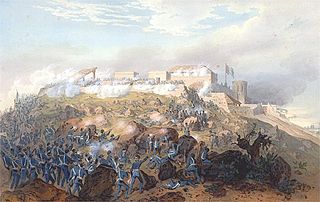
The Battle of Chapultepec took place between an American force and Mexican soldiers holding the strategically located Chapultepec Castle just outside Mexico City, fought 13 September 1847 during the Mexican–American War. The building, sitting atop a 200-foot (61 m) hill, was an important position for the defense of the city.
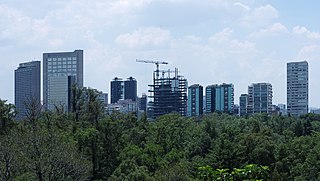
Miguel Hidalgo is a borough (alcaldía) in western Mexico City, it encompasses the historic areas of Tacuba, Chapultepec and Tacubaya along with a number of notable neighborhoods such as Polanco and Lomas de Chapultepec. With landmarks such as Chapultepec Park and the Museo Nacional de Antropología, it is the second most visited borough in Mexico City after Cuauhtémoc where the historic center of Mexico City is located. Tacubaya and Tacuba both have long histories as independent settlements and were designated as “Barrios Mágicos” by the city for tourism purposes.

The Battle of Molino del Rey was one of the bloodiest engagements of the Mexican–American War as part of the Battle for Mexico City. It was fought in September 1847 between Mexican forces under General Antonio León against an American force under Major General Winfield Scott at El Molino del Rey on the fringes of Mexico City. The Americans made little progress in this battle, but the Mexican forces were unable to hold them back long enough to prevent the capture of Mexico City one week later.

The Niños Héroes were six Mexican military cadets who were killed in the defence of Mexico City during the Battle of Chapultepec, one of the last major battles of the Mexican–American War, on 13 September 1847. The date of the battle is now celebrated in Mexico as a civic holiday to honor the cadets' sacrifice.

The Museo Amparo, located in the historic center of Puebla City, is one of the most important historical museums in Mexico. It was inaugurated in 1991 and sponsored by the Amparo Foundation, which was founded in 1979 by Manuel Espinoza Yglesias in honor of his wife.

Chapultepec Castle is located on top of Chapultepec Hill in Mexico City's Chapultepec park. The name Chapultepec is the Nahuatl word chapoltepēc which means "on the hill of the grasshopper". It is located at the entrance to Chapultepec park, at a height of 2,325 metres (7,628 ft) above sea level. The site of the hill was a sacred place for Aztecs, and the buildings atop it have served several purposes during its history, including serving as a military academy, imperial residence, presidential residence, observatory, and since February 1939, the National Museum of History. Chapultepec Castle, along with Iturbide Palace, also in Mexico City, are the only royal palaces in North America which were inhabited by monarchs.

The National Museum of Anthropology is a national museum of Mexico. It is the largest and most visited museum in Mexico. Located in the area between Paseo de la Reforma and Mahatma Gandhi Street within Chapultepec Park in Mexico City, the museum contains significant archaeological and anthropological artifacts from Mexico's pre-Columbian heritage, such as the Stone of the Sun and the Aztec Xochipilli statue.
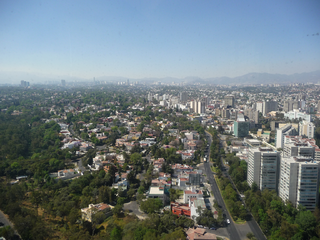
Lomas de Chapultepec is a colonia, or officially recognized neighborhood, located in the Miguel Hidalgo borough of Mexico City. It dates back to the 1920s, when it was founded with the name Chapultepec Heights. Home to some of the biggest mansions in the city and many high-net-worth individuals, it has gained a reputation of exclusivity. Its main entrance is through Paseo de la Reforma.

The WGC Championship was a professional golf tournament that was held between 1999 and 2021. It was one of the three or four annual World Golf Championships until the number of WGC events was reduced to two following the 2021 season.
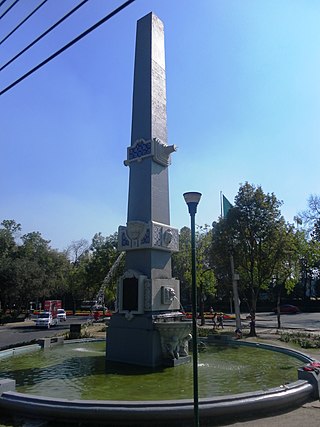
Polanco is a neighborhood in the Miguel Hidalgo borough of Mexico City. Polanco is an affluent colonia, noted for its luxury shopping along Presidente Masaryk Avenue, the most expensive street in Mexico, as well as for the numerous prominent cultural institutions located within the neighborhood.
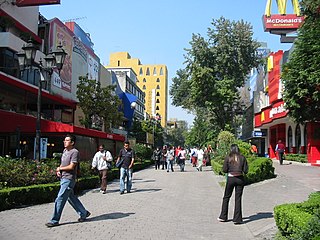
Colonia Juárez is one of the better–known neighborhoods or colonias in the Cuauhtémoc borough of Mexico City. The neighborhood is shaped like a long triangle with the boundaries: Paseo de la Reforma on the north, Avenida Chapultepec on the south, and Eje 1 Poniente on the east.
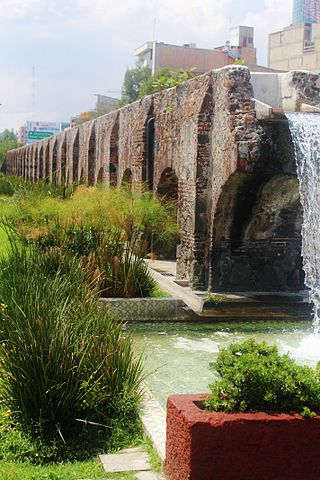
The Chapultepec aqueduct was built to provide potable water to Tenochtitlan, now known as Mexico City. Tenochtitlan was the capital of the Triple Aztec Alliance empire. This fresh water was transported from the Chapultepec springs. Two aqueducts following the same route from the springs were built by the Aztecs during the 15th century, the first destroyed by flooding and the second by the Spanish. After the Spanish conquest a colonial aqueduct was built, the ruins of which are located near Metro Sevilla.

The Museo Nacional de las Culturas is a national museum in Mexico City dedicated to education about the world's cultures, both past and present. It is housed in a colonial-era building that used to be the mint for making coins. Prior to this, the site was the home of the location of the Moctezuma's Black House. The mint was moved to Apartado Street in 1850, and the building was used for various purposes until it was converted to its current use in 1966.
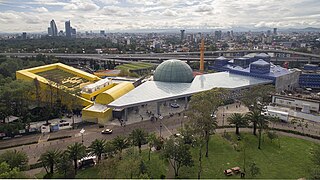
The museum Papalote Museo del Niño is located in Mexico City Bosques de Chapultepec. The museum is focused in learning, communication and working together through interactive expositions of science, technology and art for children.

The Museo de la Estampa is a museum in Mexico City, dedicated to the history, preservation and promotion of Mexican graphic arts. The word “estampa” means works in the various printmaking techniques which have the quality of being reproducible and include seals, woodcuts, lithography and others. The museum was created in 1986 and located in a 19th-century Neoclassical building located in the Plaza de Santa Veracruz in the historic center of the city. This building was remodeled both to house the museum and to conserve its original look.

Campo Marte is a venue under the administration of the Secretariat of National Defense (SEDENA). Named after the Campus Martius, it is used for military and government events, as well as equestrian events. Campo Marte is located next to the National Auditorium in Chapultepec Park, Mexico City.
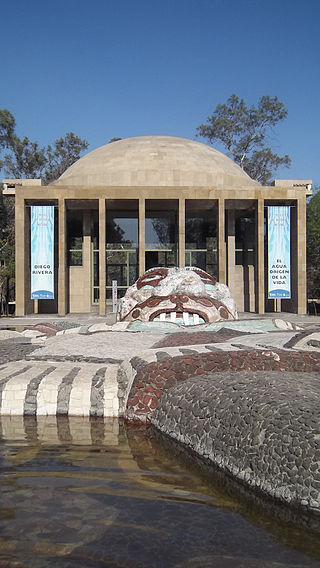
The Cárcamo de Dolores is a hydraulic structure located on the Second Section of Chapultepec Park, in Mexico City, comprising the building designed by architect Ricardo Rivas, inside the originally underwater mural Agua, el origen de la vida of Mexican muralist Diego Rivera, the art installation Cámara Lambdoma by Ariel Guzik, and in outside, the Tlaloc Fountain, also of Rivera.

The Palace of Mining, also Palace of Mines, is a building in Mexico City, Mexico, considered to be a fine example of Neoclassical architecture in the Americas. It was designed and built between 1797 and 1813 by Valencian Spanish sculptor and architect Manuel Tolsá. It was built to house the Royal School of Mines and Mining of the Royal Court at the request of its director, Fausto Elhuyar, a scientifically-trained mineralogist.
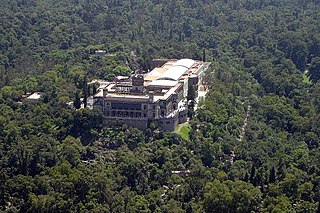
The Museo del Caracol is a Mexican history museum, at the bottom of the access ramp to the Castillo de Chapultepec in Mexico City. The “Snail Museum” is a spiral shaped building designed by the architect Pedro Ramirez Vazquez. The director is Patricia Torres Aguilar Ugarte. It is open from Tuesday to Thursday from 9:00 to 16:45.





















